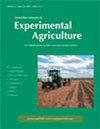Current usage and future development of the Meat Standards Australia (MSA) grading system
引用次数: 45
Abstract
Progress in the development and adoption of the Meat Standards Australia system has encouraged substantial change and an improved consumer awareness at all points of the Australian beef production chain. The system is moving from niche to mainstream market application with the exciting potential to transform many industry practices and build a more direct consumer focus. The system aims to accurately predict consumer satisfaction levels for individual cooked beef portions. This is a major advance on grading systems that classify carcasses into groups of like appearance. A prediction model was developed based on consumer testing and has proved to be useful in categorising a wide range of beef into consumer grades within cooking methods. These provide a basis to ensure a predictable eating quality result for the consumer and a mechanism to align product description and pricing throughout the production chain. When used in value-based marketing systems financial reward can be directly linked to consumer satisfaction encouraging a consumer-focussed industry. Research is proceeding to extend and improve the accuracy of the prediction model encompassing additional cattle types and cooking methods. Several projects in other countries are adding insights into the relative response of consumers from varied cultural backgrounds. It is hoped that further international collaboration will facilitate use of the developed technology to improve consumer value and industry returns through improved product consistency in global markets.澳大利亚肉类标准(MSA)分级系统的当前使用和未来发展
在制定和采用澳大利亚肉类标准体系方面取得的进展鼓励了澳大利亚牛肉生产链各环节的重大变化和提高了消费者的意识。该系统正从小众市场转向主流市场应用,具有改变许多行业惯例和建立更直接的消费者焦点的令人兴奋的潜力。该系统旨在准确预测消费者对个别熟牛肉部分的满意度。这是将尸体分类为相似外观组的分级系统的重大进展。在消费者测试的基础上开发了一种预测模型,并已被证明在根据烹饪方法将各种牛肉划分为消费者等级方面是有用的。这些为确保消费者可预测的饮食质量提供了基础,并为整个生产链中的产品描述和定价提供了机制。当在基于价值的营销系统中使用时,财务奖励可以直接与消费者满意度挂钩,从而鼓励以消费者为中心的行业。研究正在进行中,以扩展和提高预测模型的准确性,包括更多的牛种类和烹饪方法。在其他国家的几个项目正在增加对来自不同文化背景的消费者的相对反应的见解。希望进一步的国际合作将促进利用已开发的技术,通过提高全球市场上产品的一致性来提高消费者价值和工业回报。
本文章由计算机程序翻译,如有差异,请以英文原文为准。
求助全文
约1分钟内获得全文
求助全文

 求助内容:
求助内容: 应助结果提醒方式:
应助结果提醒方式:


